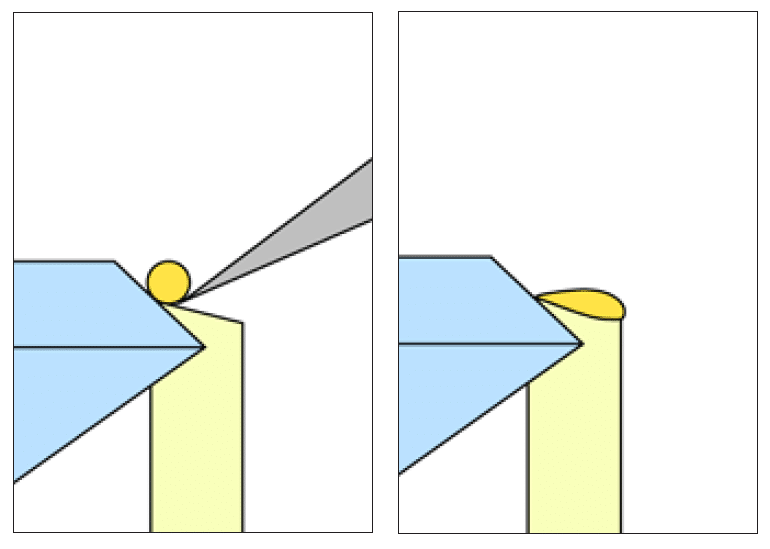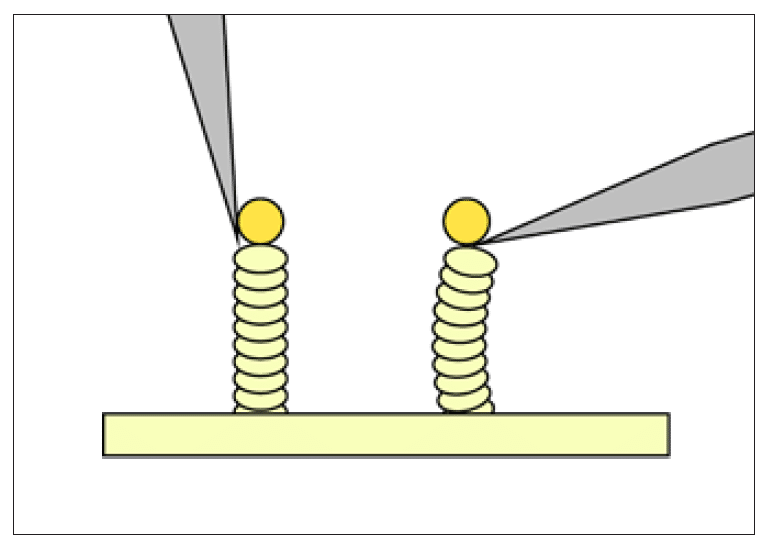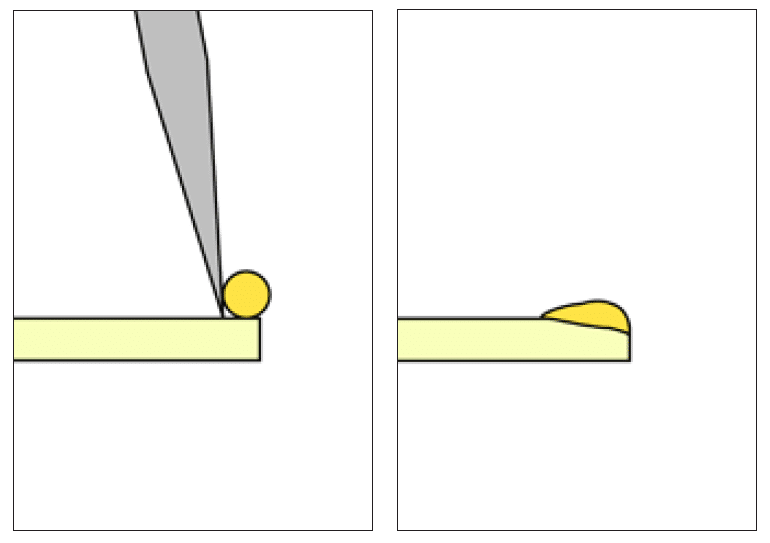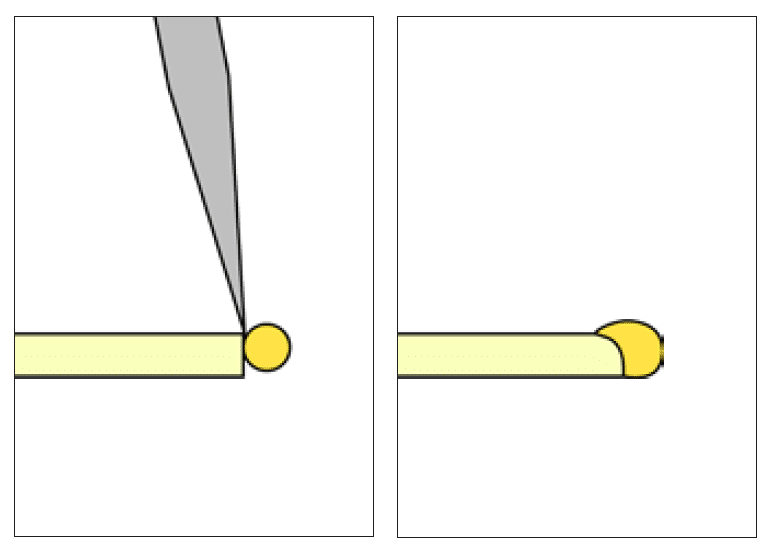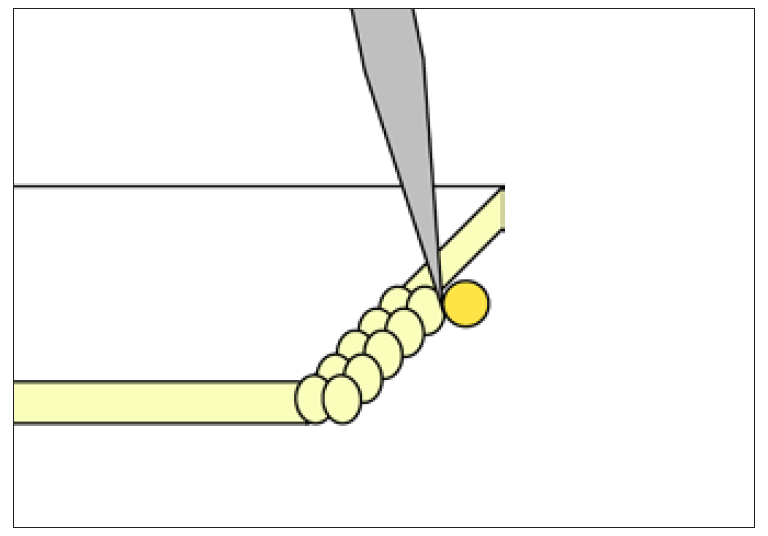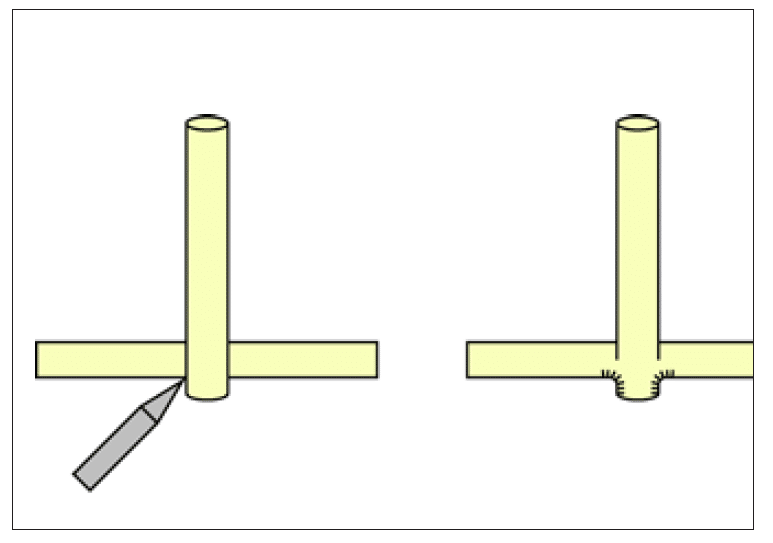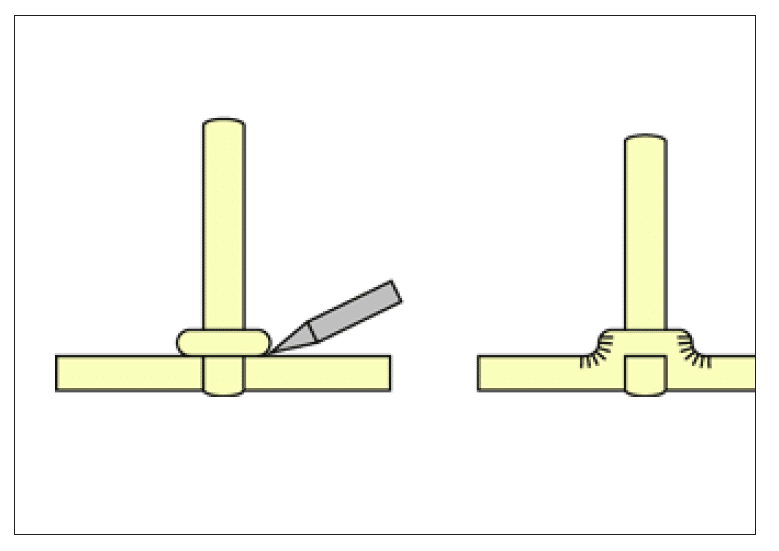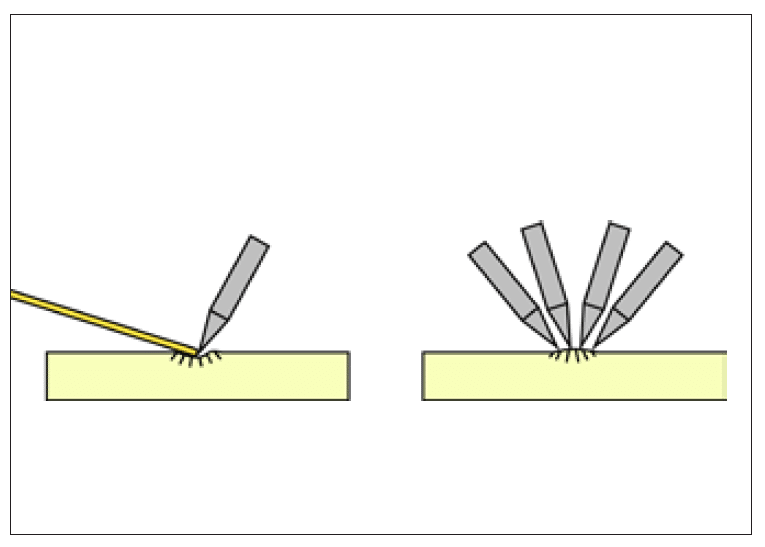Electrode guidance during welding
The electrode guidance strategy is important for successful welding.
The angle of the electrode determines the direction in which the material is moved.
This makes it possible to plan where filler material is to be placed and how it is to be moved to the correct position using the electrode angle for each weld.
Flow behavior on cracking
In addition to heat-sensitive materials such as gemstones, welding may only be carried out from the outside.
The welding wire lies in front of the stone and serves as heat protection.
If the electrode is placed at a shallow angle of around 30 – 45°, the molten metal is drawn outwards towards the electrode.
Electrode angle
If the electrode is placed at a steep angle of around 70 – 90°, the molten material is pressed downwards and remains in its original position.
This electrode angle is particularly preferable for silver, as silver can only be pushed, not pulled.
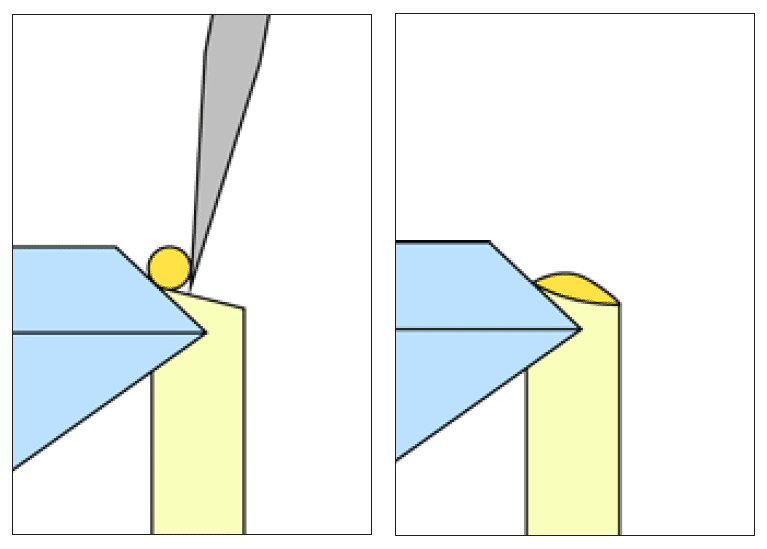
Protect edges
To protect edges, welding wire is applied to the corresponding area and fused over the edge with a steep electrode angle to create a thickening.
With thin materials in particular, it is advisable to reinforce the sensitive edge first before building it up further.
The steep electrode angle concentrates as little energy as possible on the welding wire for reinforcement .
Welding in angles
If two parts standing at right angles to each other are to be joined, the electrode is placed exactly in the middle at a 45° angle.
In this way, material is fused evenly from both sides, as shown here using the example of a pin.
The part of the pin protruding from a drilled hole is used as filler material.
Welding is carried out here in joint mode.

